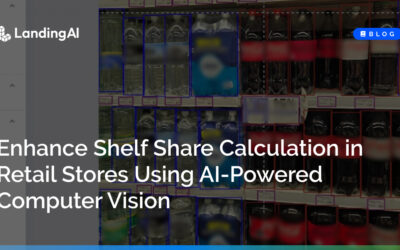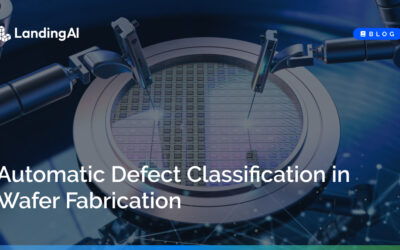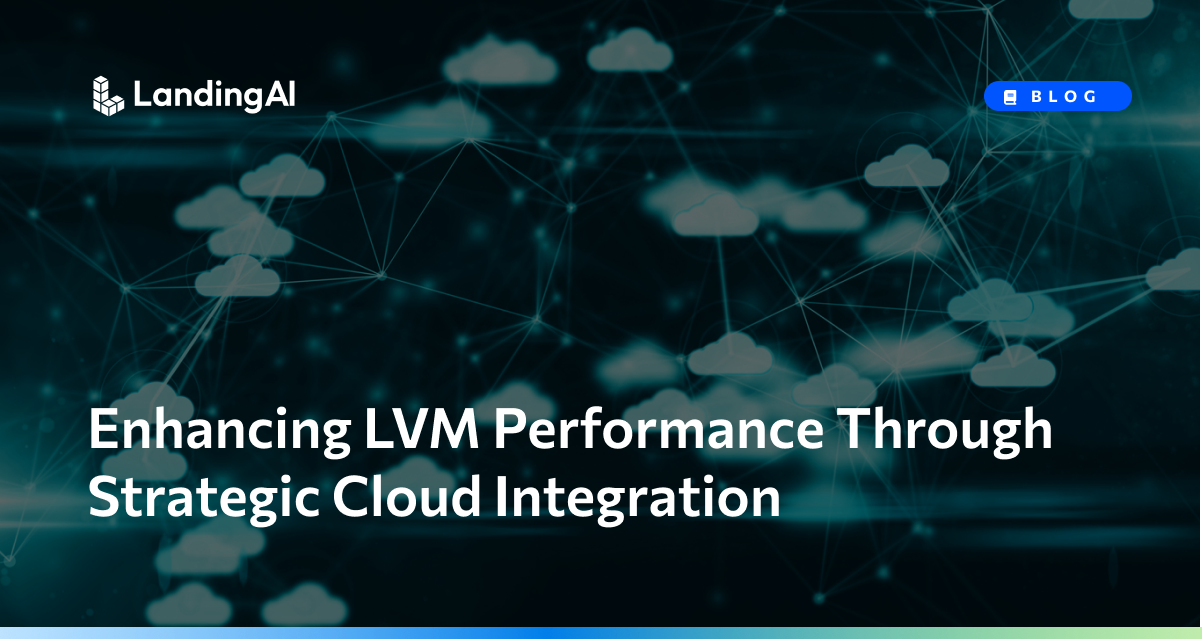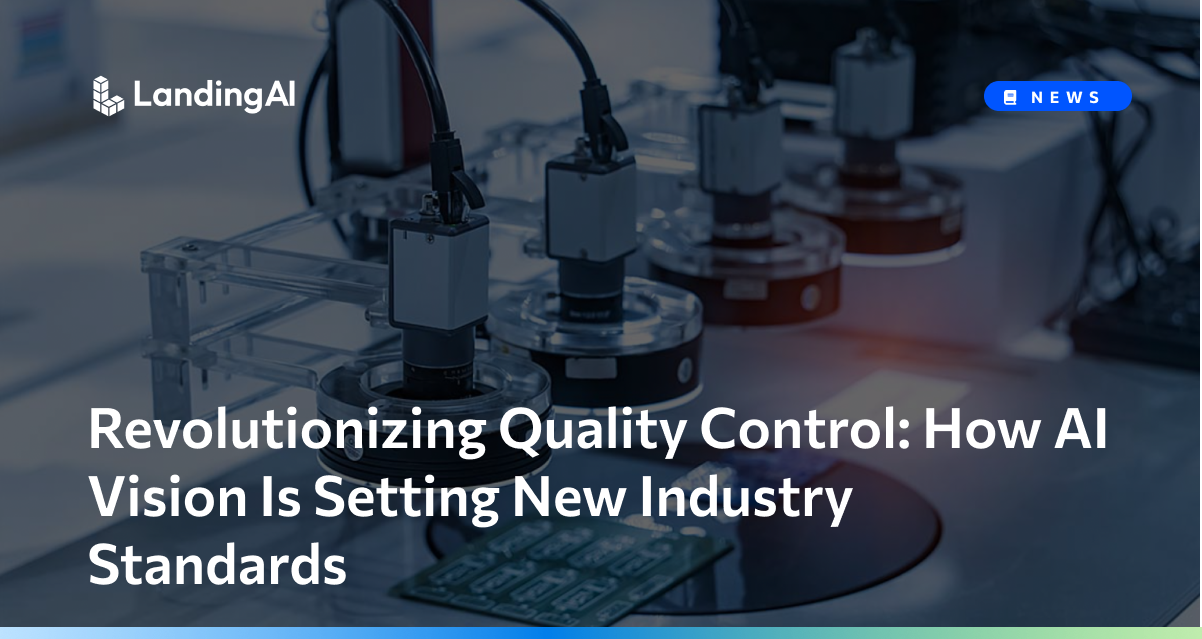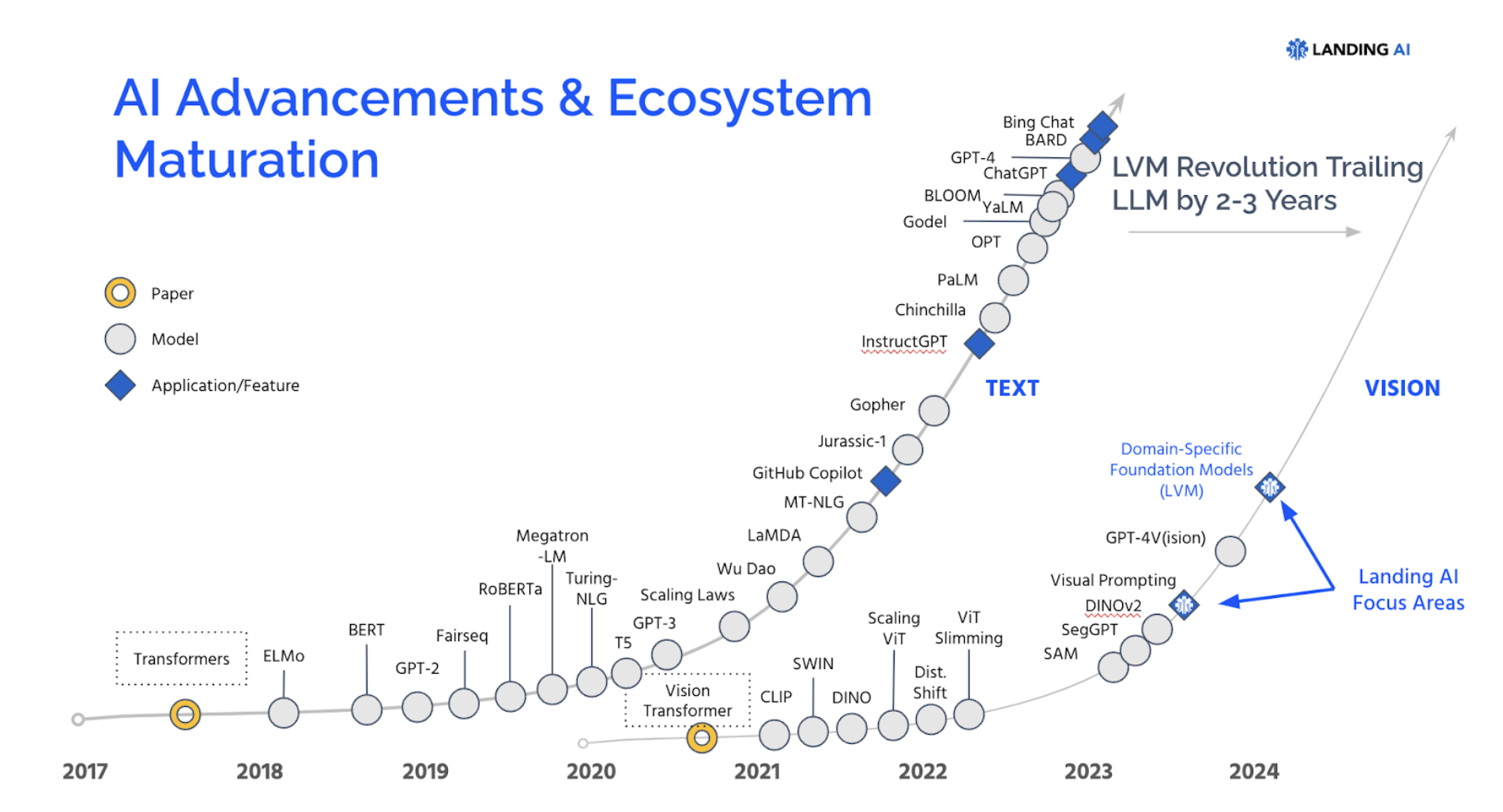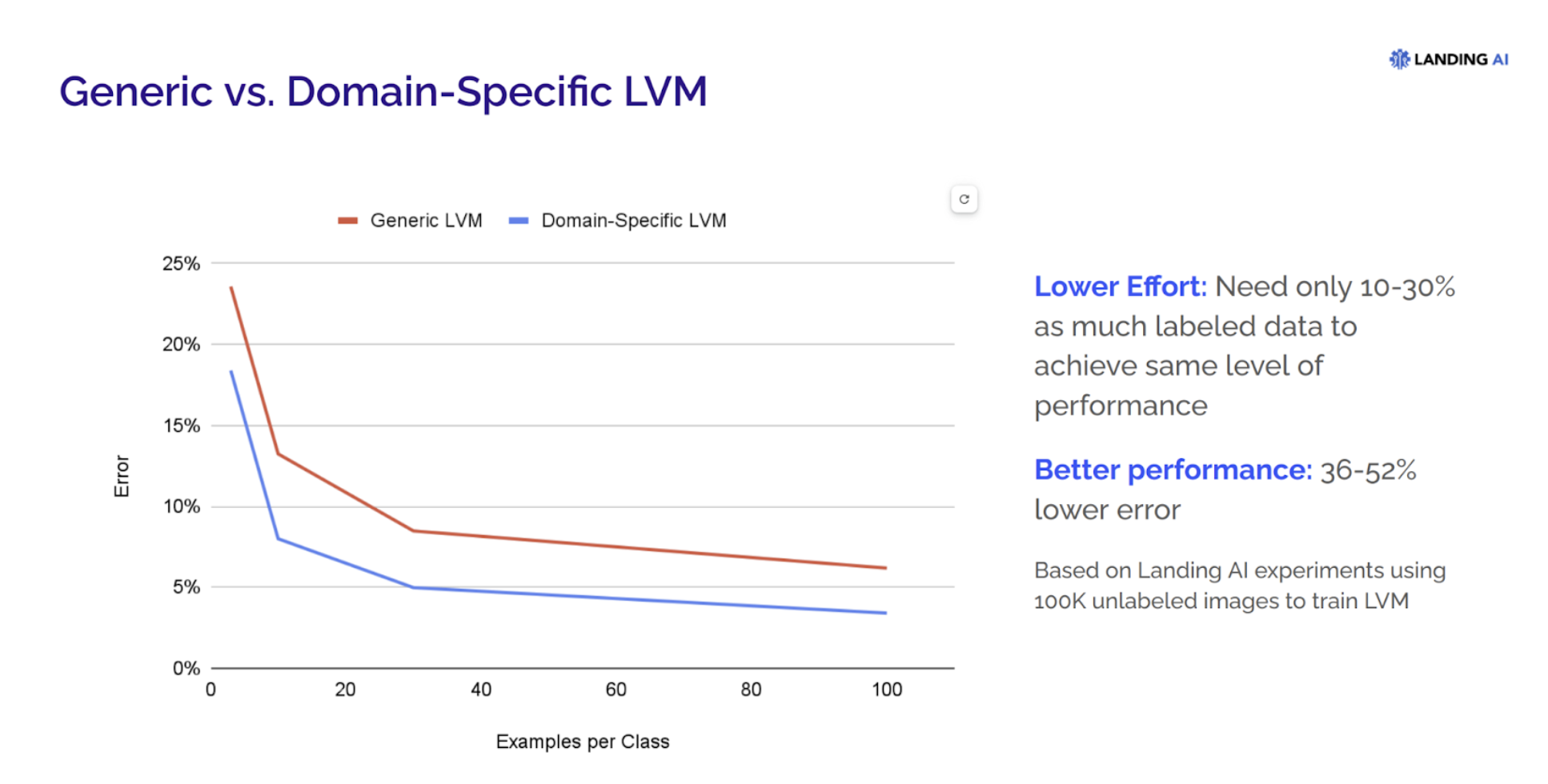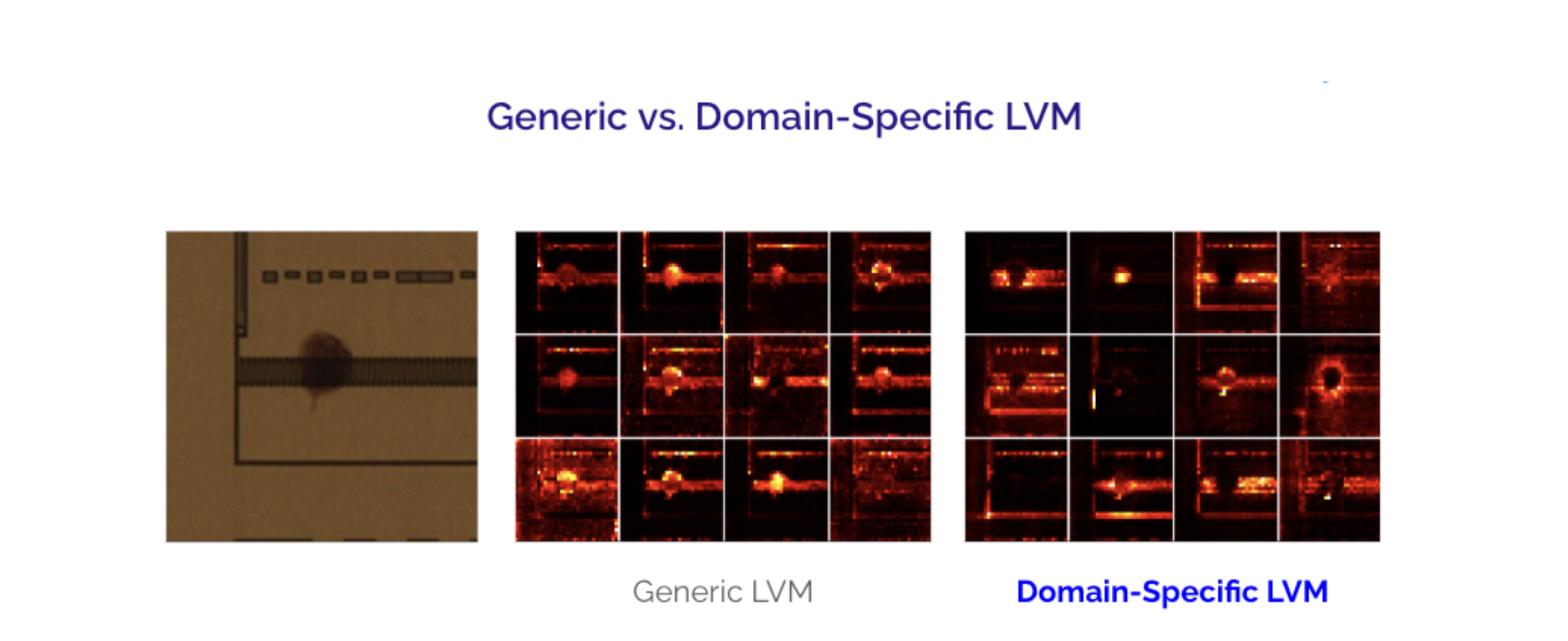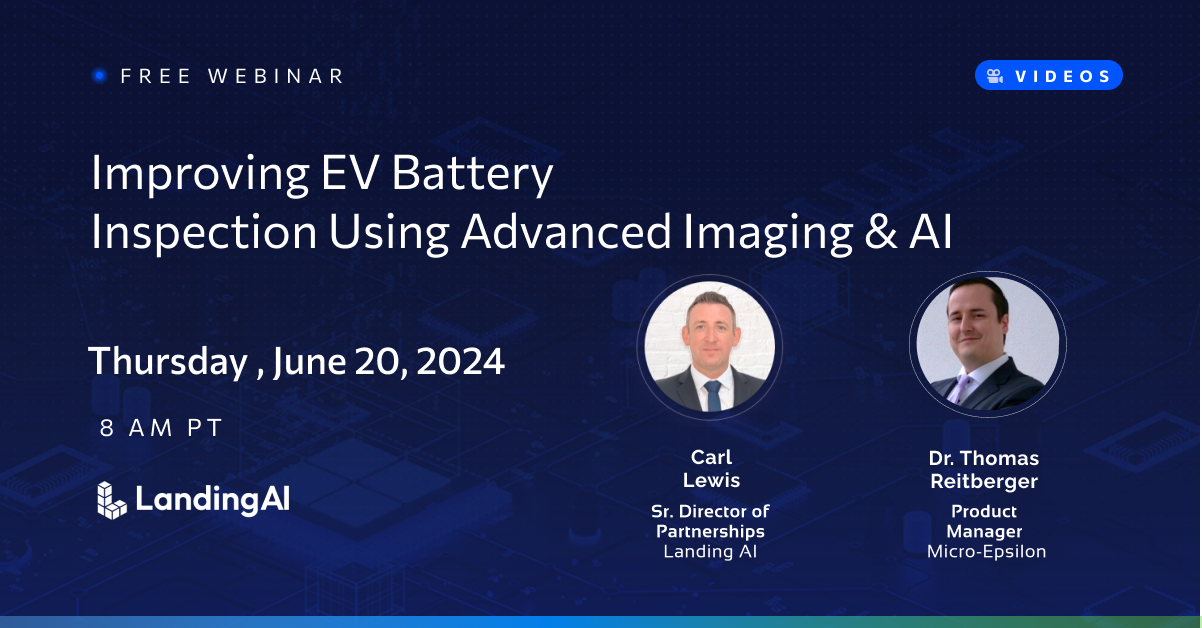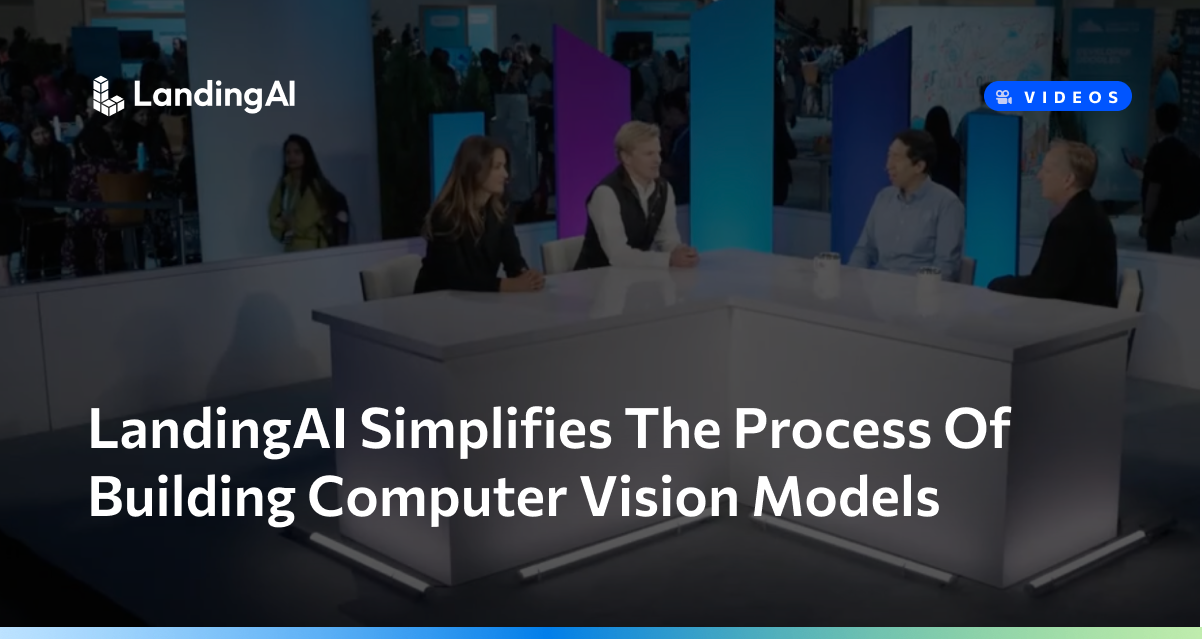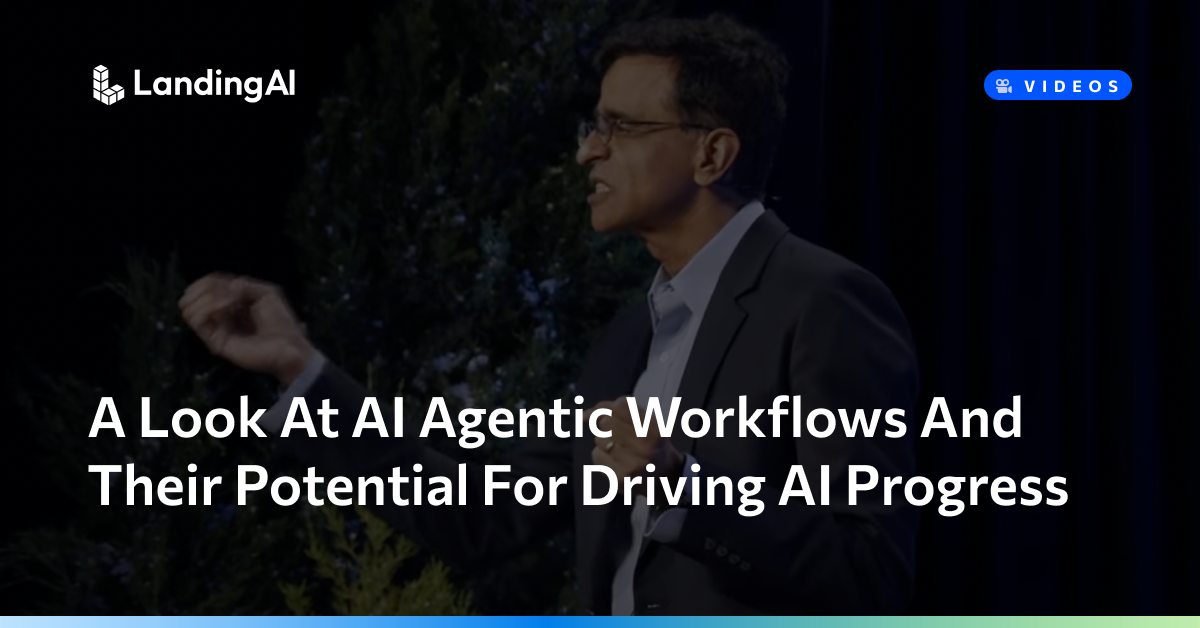LandingAI Unveils the Power of Domain-Specific Large Vision Models: Revolutionizing the Way We See the World!
We are excited to announce the latest innovation from LandingAI, domain specific Large Vision Models (LVMs), continuing upon our successful launch of Visual Prompting earlier this year. Similar to what we have seen with large language models (LLMs) enabling the text revolution, we believe large vision models are now enabling the vision revolution, but with one key difference: Whereas LLMs trained on internet text work well on most companies’ proprietary documents, most businesses’ images look nothing like Instagram and other internet images, which is why an LVM adapted to be specific to the company’s use case is needed. We have seen domain specific LVMs demonstrate superior performance with a deeper and more nuanced understanding of visual content, in tasks such as image classification, object detection and segmentation with its ability to capture intricate patterns and features in data.
Over the past few years, the field of artificial intelligence and computer vision specifically has witnessed a transformative shift with the advent of vision transformers and general large vision models. These models, powered by deep learning architectures, have demonstrated remarkable capabilities in tasks related to computer vision. At the forefront of this revolution for consumers are companies like OpenAI with models like GPT-4V and Meta with SAM (Segment Anything Model) as well as LandingAI focusing more squarely on enterprises with our introduction of domain specific LVMs. A domain specific LVM, which has been trained on a large set of images, enables an enterprise to quickly adapt it to a myriad of use cases within that domain.
For businesses that have a large, proprietary set of image or video data within a specialized domain, this offers a recipe to unlock the tremendous value latent in that data.
Chart detailing computer vision progress, AI advancements and ecosystem maturation from 2017 to 2024 and beyond.
Generic LVMs (initially trained on internet images) are already having an impact across multiple industries. However, we expect domain specific LVMs – tuned to a particular sector or domain – to be a significant accelerator.
In manufacturing, LVMs already contribute to quality control by inspecting and identifying defects in products with a higher level of accuracy than traditional computer vision solutions. In the automotive industry, these models will be critical to solving the challenges still being faced around self-driving cars, by enhancing their ability to perceive and interpret the surrounding environment in ways previously unobtainable.
In healthcare, we have seen LVM models being utilized for medical image analysis, aiding in the diagnosis of diseases and identifying anomalies in medical scans.
Financial institutions could benefit from using LVMs for fraud detection and risk assessment by analyzing vast datasets to identify irregular patterns and potential risks. In marketing and e-commerce, these models help aid in personalized recommendations, improving user experience and engagement.
But adapting LVMs to each application in these domains is still time-consuming. By building domain-specific LVMs adapted to such domains, it will become dramatically more efficient to have computers understand, analyze and process images from these domains.
On a histopathology tissue classification task, the domain-specific LVM required one-tenth the amount of labeled data to match the performance of a generic LVM and a conventional supervised learning approach.
Applications for Domain Specific Large Vision Models
Domain specific LVMs have the potential for widespread application in various real-world scenarios. Here are some key applications and use cases where we believe domain specific LVMs will improve on traditional computer vision applications:
- Medical Imaging:
- Description: Analyze medical images, assisting in diagnosis and treatment planning.
- Application: Used in detecting anomalies in X-rays, MRIs, CT scans, and pathology slides. Also, for image segmentation in tumor detection and organ localization.
- Autonomous Vehicles:
- Description: Contribute to the perception and decision-making components of autonomous vehicles.
- Application: Used for lane detection, object recognition, and tracking in real-time, enabling autonomous vehicles to navigate safely and respond to their surroundings.
- Augmented Reality (AR):
- Description: Enhance AR experiences by recognizing and interacting with the real-world environment.
- Application: Overlaying digital information on real-world scenes, interactive gaming, and virtual try-on experiences in e-commerce.
- Geospatial and Satellite Imagery Analysis:
- Description: Analyze satellite and aerial imagery for environmental monitoring and disaster response.
- Application: Monitoring deforestation, assessing crop health, and aiding in disaster response by identifying affected areas.
- Retail Analytics:
- Description: Analyze customer behavior and optimize store layouts for better retail experiences.
- Application: People counting, analyzing customer movement patterns, and optimizing product placements based on customer engagement.
Domain specific LVM, which we’ve trained using unlabeled data to work specifically on semiconductor images, recognizes the most important features on semiconductor images.
[Image Source] “Automatic defect classification (ADC) solution using data-centric artificial intelligence (AI) for outgoing quality inspections in the semiconductor industry”, Proc. SPIE 12496, Metrology, Inspection, and Process Control XXXVII, 1249635 (27 April 2023);https://doi.org/10.1117/12.2658434.
Impact on Industries
Domain specific LVMs are beginning to reshape industries by introducing advanced capabilities in image analysis, pattern recognition, and decision-making. Here’s how we think domain specific LVMs will drive value across different sectors:
- Manufacturing:
- Quality Control: Employed for automated quality control in manufacturing processes. They can more accurately detect defects, anomalies, and deviations in real-time, ensuring the production of high-quality goods.
- Predictive Maintenance: Predictive maintenance is enhanced through LVMs that analyze data from sensors and cameras to predict equipment failures before they occur, minimizing downtime.
- Healthcare/Pharmaceuticals:
- Medical Imaging: Assist in medical image analysis, aiding in the detection and diagnosis of diseases in radiology, pathology, and other medical imaging fields.
- Drug Discovery: Image-based models contribute to drug discovery processes by analyzing cellular and molecular structures, potentially accelerating the identification of new pharmaceutical compounds.
- Finance:
- Fraud Detection: Enhance fraud detection in financial transactions by analyzing patterns and anomalies in images, such as signatures and documents.
- Algorithmic Trading: Image analysis is utilized in algorithmic trading for interpreting visual data, like charts and graphs, to inform trading decisions.
- Agriculture:
- Precision Farming: Aid in precision agriculture by analyzing satellite and drone imagery to monitor crop health, detect diseases, and optimize irrigation and pesticide usage.
- Harvesting Automation: Contribute to the development of automated harvesting systems by identifying ripe fruits or vegetables, improving efficiency in agriculture.
- Oil & Gas:
- Facility Monitoring: Applied to monitor oil and gas facilities, identifying potential safety hazards and ensuring compliance with regulations.
- Equipment Inspection: Enable automated inspection of equipment, pipelines, and infrastructure, reducing the need for manual inspections in hazardous environments.
- Retail:
- Customer Experience: Enhance the retail customer experience through applications like cashierless checkout systems and personalized shopping recommendations.
- Inventory Management: Optimize inventory management by automating stock counting, identifying out-of-stock items, and preventing overstock situations.
- Logistics and Transportation:
- Automated Inspection: Play a role in automating the inspection of goods in logistics, ensuring accurate sorting and minimizing errors in shipping.
- Traffic Monitoring: In transportation, vision models analyze traffic patterns and assist in traffic management and optimization.
- Smart Cities:
- Public Safety: Contribute to public safety by analyzing surveillance footage for potential threats, monitoring crowd behavior, and enhancing emergency response systems.
- Urban Planning: Aid in urban planning by analyzing data from cameras and sensors to optimize traffic flow, public spaces, and infrastructure.
- Education:
- Remote Learning: In the education sector, large vision models are used for proctoring exams, monitoring student engagement, and providing personalized learning experiences.
- Accessibility: Assist in creating accessible content for individuals with visual impairments through image recognition and description.
- Environmental Monitoring:
- Ecosystem Analysis: Contribute to environmental monitoring by analyzing satellite imagery to assess changes in ecosystems, deforestation, and climate-related patterns.
The integration of LVMs across industries is fostering innovation, improving efficiency, and enabling more informed decision-making.
Conclusion
We believe domain specific LVMs will become indispensable in a wide range of real-world scenarios, revolutionizing industries and enhancing the efficiency and capabilities of various systems. Their ability to learn complex patterns from massive image datasets will make them an invaluable tool for tackling diverse challenges across different domains.
LandingAI has been working with organizations that have 100K to over 1 billion images. Does your organization have a large (100K images or more) set of images that look different from typical internet images? If you want to see if it’s possible to extract significant value from your data using domain-specific Large Vision Models, submit a request to Start Your LVM Journey.
